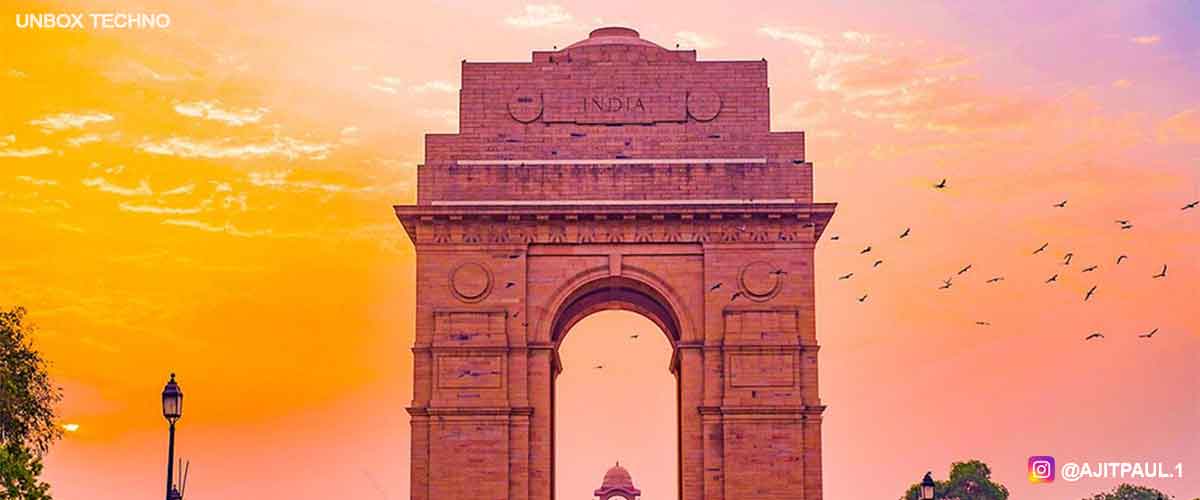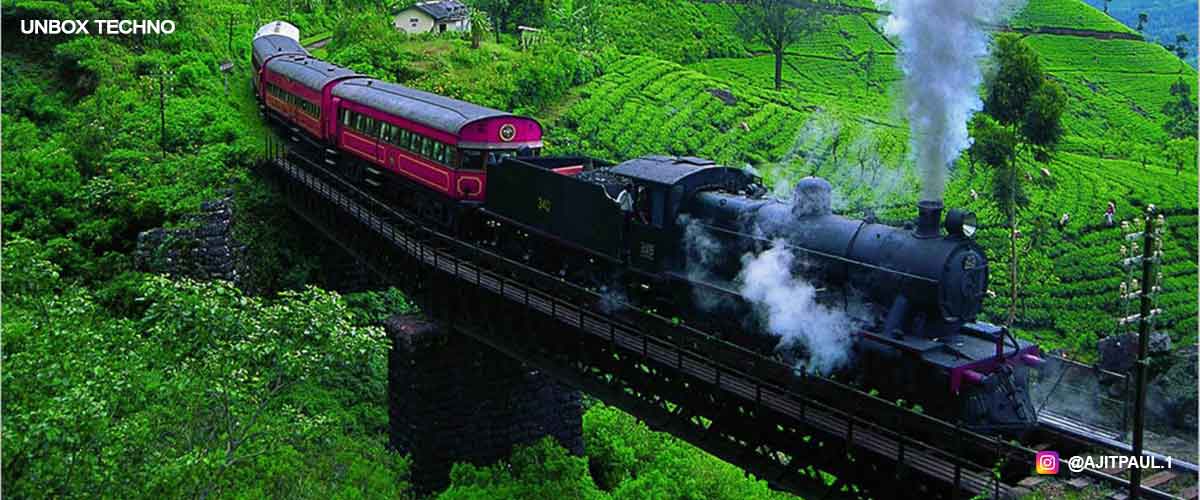10 Places in Delhi You must-visits Once in your Life :
Delhi is a major city and union territory of India, with New Delhi as the capital of India. Delhi is the third most populous city in the world. Where is it known that the ancient name of Delhi was Indraprast, which today is the name of only one place. Delhi has always had its own history, many kings have made Delhi their capital. Many monuments built by the Mughal Empire are still there today, such as Red Fort, Jama Masjid, Qutub Minar, Humayun Tomb, etc., to see which people come from every corner of the world today.
Today we will know which are the ten places in Delhi that you must visit once in your life.
1. Red Fort ( Lal Qila )
The history of this fort, which is considered to be the national pride of India, is very interesting. The reason for the construction of Red Fort was the heat of Agra. Agra was once the capital of the Mughal Empire, but being troubled by the heat there, Shah Jahan talked about making Delhi situated on the Yamuna as his capital and the first foundation of the Red Fort was laid in 1638 AD, which was completed in 1648. It took 10 years to build the Red Fort. The Red Fort is made of white and red stone.
Let us tell you that Shah Jahan wanted to make this fort very attractive and beautiful, that is why this work was given to the famous architect and designer of the Mughal period, Ustad Ahmad Lahori, who designed the Taj Mahal of Agra and the Red Fort of Agra. This is the reason that even today the Red Fort is known all over the world for its vastness and beauty.
Address - Netaji Subhash Marg, Chandni Chowk, New Delhi, Delhi 110006, India
Official Website - https://www.indiaculture.nic.in/red-fort-complex
2. Qutub Minar
Qutub Minar is located in the Mehrauli area of Delhi city in India. The world's tallest tower is made of bricks. This is a famous landmark of Delhi, whose height is 72.5 meters and diameter is 14.3 meters, which becomes 2.75 meters after reaching the summit. This tower has 379 steps. Its construction was started in 1192 by Qutubuddin Aibak, the first Muslim ruler of Delhi, inspired by the Minaret of Jam located in Afghanistan, but could only get its base built. After that his successor Iltutmish increased it by three stories and in 1368 Firoz Shah Tughlaq built the fifth and final story. This minaret was built to make a call to offer prayers. There are other important monuments in this complex such as a gate built-in 1310, Alai Darwaza, Quwat-ul-Islam Mosque; Tombs of Altmish, Alauddin Khilji, and Imam Jamin; Alai Minar, seven meters high iron pillar, etc.
Address - Mehrauli, New Delhi, Delhi 110030, India
Official Website -http://www.qutubminar.org
3. Humayun’s Tomb
Humayun's Tomb is located near the Old Fort of New Delhi in the Nizamuddin East area near Mathura Marg. This tomb was built in 1562 by order of Humayun's widow Begum Hamida Banu Begum. The architect of this building was Sayyid Mubarak ibn Mirak Ghiyathuddin and his father Mirak Ghuyathuddin who had been specially summoned from the city of Herat in Afghanistan. The main building here is the tomb of the Mughal emperor Humayun and it also houses the tombs of many other royal people including Humayun's tomb. The main building took eight years to build, but its full glory is bestowed with the Charbagh-style Mughal gardens spread over 30 acres that surround it. These gardens were the first examples of their kind not only in India but in South Asia. This is the reason that people come from abroad to see it and this group is also declared a World Heritage Site.
Address -Mathura Road, Nizamuddin, New Delhi, Delhi, India
Official Website -http://www.humayunstomb.com
4. Jama Musjid
Jama Masjid is a mosque located in Delhi which was constructed in the year 1656. This mosque is made of red stones and marble. 500 m from Red Fort. Jama Masjid is situated at a distance of which is the largest mosque in India. The construction of this mosque was started by Shah Jahan in 1650. It took 6 years to make it. Built of sandstone and white marble, this mosque can be entered from the north and south gates. The eastern gate opens only on Fridays, which is said to have been used by the Sultan. Its prayer hall is very beautiful. It has eleven arches with the middle one being slightly larger than the others. The domes above it are decorated with white and black marble, reminiscent of the Nizamuddin Dargah.
Address - Chandni Chowk, New Delhi, Delhi, India
Official Website -
5. India Gate
The India Gate originally called the All India War Memorial, is a massive 42 meters high located on the Rajpath in New Delhi. It is a national monument of independent India. It was created in the year 1931. Known as the All India War Memorial, this monument was built by the British rulers in memory of the 90000 Indian soldiers who were martyred in the First World War and the Afghan Wars by enlisting in the British Army. After the independence of India, the India Gate has remained only the site of the tomb of unknown soldiers of the Indian Army. Amar Jawan Jyoti has been established under its arch. The names of thousands of martyr soldiers are engraved on the walls of India Gate and the top is written in English.“ To the dead of the Indian armies who fell honored in France and Flanders Mesopotamia and Persia East Africa Gallipoli and elsewhere in the near and the far-east and in sacred memory also of those whose names are recorded and who fell in India or the north-west frontier and during the Third Afgan War. ”
Address - Rajpath, India Gate, New Delhi, Delhi, India
Official Website -
6. Lotus Temple
There is a Baha'i place of worship located near Nehru Place, the capital of India, Delhi. It is a unique temple in itself. There is no idol here and no religious rituals of any kind are performed, on the contrary, various holy articles related to different religions are read here. For the people of India, the lotus flower is a symbol of purity and peace as well as a symbol of the incarnation of God. This flower teaches us to remain pure and clean in spite of blooming in the mud. The temple was inaugurated on 24 December 1986 but the temple was opened to the general public on 1 January 1987. This white-colored marble building looks amazing. Every day more than 10 thousand tourists come here from abroad.
Address -Lotus Temple Road, Shambhu Dayal Bagh, New Delhi, Delhi, India
Official Website -http://bahaihouseofworship.in
7. Parliament of India
Parliament is the highest legislative body of India. The Indian Parliament consists of the President and two houses - the Rajya Sabha (Council of States) and the Lok Sabha (House of the People). The President has the power to summon or adjourn either of the Houses of Parliament or to dissolve the Lok Sabha. The Constitution of India came into force on 26 January 1950. The first general elections under the new constitution were held in the year 1951-52 and the first elected Parliament came into existence in April 1952, the second Lok Sabha in April 1957, the third Lok Sabha in April 1962, the fourth Lok Sabha in March 1967, the fifth Lok Sabha In March 1971, Sixth Lok Sabha in March 1977, Seventh Lok Sabha in January 1980, Eighth Lok Sabha in December 1984, Ninth Lok Sabha in December 1989, Tenth Lok Sabha in June 1991, Eleventh Lok Sabha in May 1996, Twelfth Lok Sabha in March 1998, Thirteenth Lok Sabha in October 1999 In India, Fourteenth Lok Sabha came into existence in May 2004, Fifteenth Lok Sabha in April 2009, Sixteenth Lok Sabha in May 2014 and Seventeenth Lok Sabha in May 2019.
Address -Sansad Marg, Gokul Nagar, Janpath, Connaught Place, New Delhi, Delhi 110001
Official Website -https://loksabha.nic.in
8. Rashtrapati Bhawan
Rashtrapati Bhavan is the official residence of the President of India. This wonderful and huge building is situated on 'Raisina Hill'. It is one of the largest buildings in the world. Rashtrapati Bhavan is a masterpiece of architecture. The idea of building this building first arose in 1911 when the Delhi Durbar decided that the capital of India would be shifted from Kolkata to Delhi. Simultaneously it was also decided that a luxurious building would be constructed in New Delhi for the residence of the British Viceroy. This building is spread over 330 acres. The design of this huge building was prepared by 'Sir Edwin Lutyens'. The building has 340 rooms, 74 verandahs, 37 auditoriums, a corridor of about one kilometer, 18 steps (stairways), and 37 fountains.
Address -Rashtrapati Bhawan, President's Estate, New Delhi, Delhi 110004
Official Website -https://rashtrapatisachivalaya.gov.in
9. Akshardham
Swaminarayan Akshardham Temple is a unique cultural pilgrimage site built in Delhi. The campus is spread over 100 acres of land. Being the largest Hindu temple complex in the world, it was included in the Guinness Book of World Records on 26 December 2007. Akshardham Temple is built with a mix of pink, white marble, and sandstone. It took more than 11 thousand artisans and 5 years to build this temple. A scenic fountain show is organized in the temple every evening. The cycle of birth, and death is mentioned in this show. Many stories are told in the fountain. This temple is closed on Mondays. There are 2870 steps in the Akshardham temple. The temple also has a pool, which depicts the greatness of the great mathematicians of India. Gardens and meadows adorned with brass sculptures make this entire complex attractive. More than 10 thousand tourists visit this place every day.
Address - Noida Mor, Pandav Nagar, New Delhi, Delhi 110092
Official Website -https://akshardham.com
10. National Museum
The roadmap for the establishment of the National Museum in Delhi was prepared by the Maurice Gwyer Committee in May 1946. The National Museum, New Delhi was inaugurated on 15th August 1949 by the then Governor-General of India, Shri R.C. Rajagopalachari at Rashtrapati Bhavan. The foundation stone of its present building was laid on May 12, 1955, by the Prime Minister of India, Pandit Jawaharlal Nehru. Presently the museum preserves about 2,00,000 objects of various types, both Indian and foreign. These objects of cultural heritage importance are about five thousand years old. Books and magazines on subjects such as prehistoric and historiographical- art, archaeology, physical and cultural- anthropology, civilization and culture preservation, decorative arts, history, museums, painting preservation are available here. Apart from these good books and encyclopedias related to Indian philosophy and religion, reference books have also been collected for research and reference purposes. It contains over seventy thousand books, as well as many Indian and international papers and magazines.
Address -Janpath Rd, Rajpath Area, Central Secretariat, New Delhi, Delhi 110011
Official Website -http://nationalmuseumindia.gov.in

